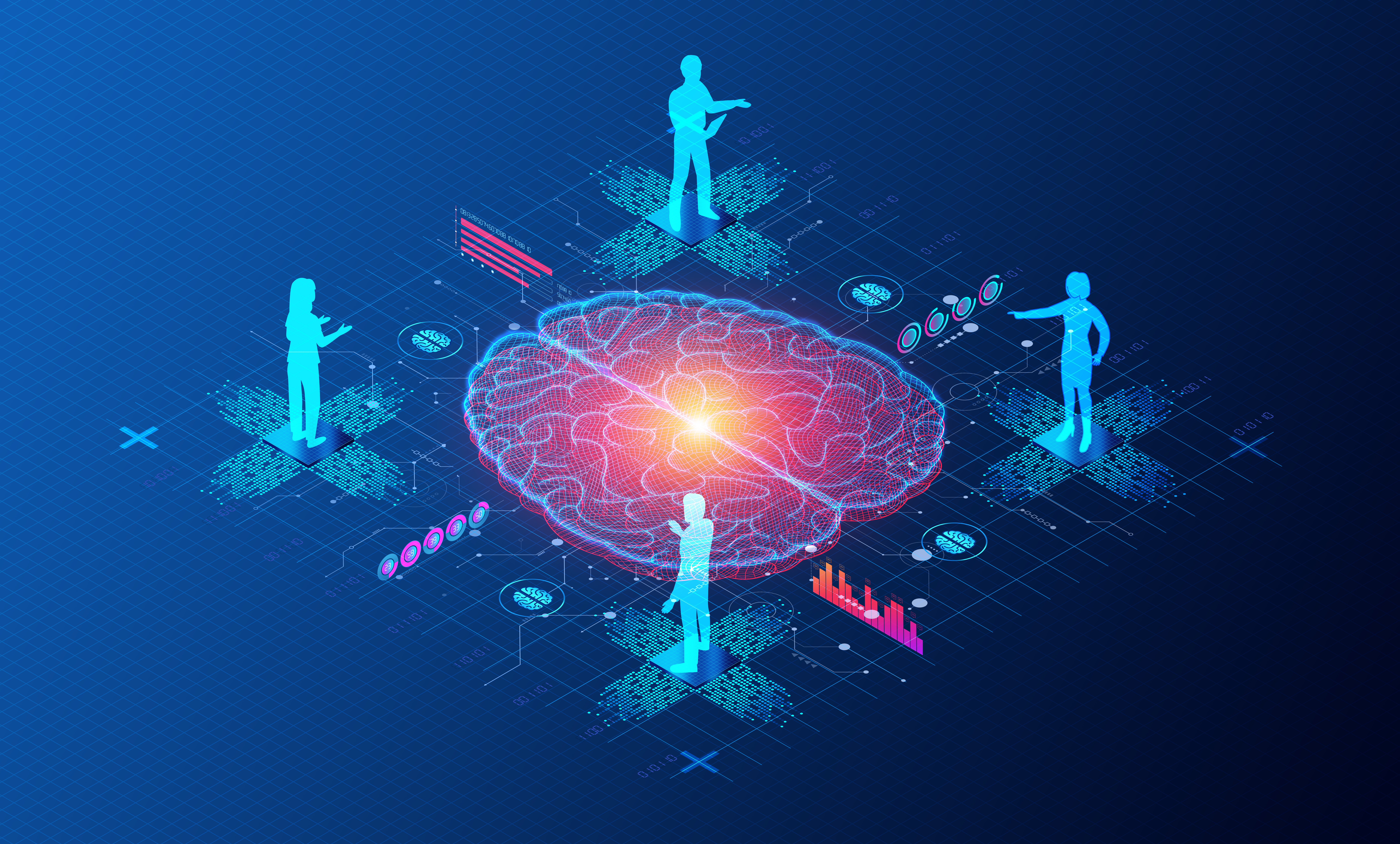Cognitive Automation: Introduction to Intelligent Automation

The concept of “Cognitive Automation” may seem, at first glance, an enigma of words, a mix of concepts that at first sight seem opposites. Until a few decades ago, “cognitive” was closely associated with the human being, but today the scenario is completely different.
As we know, technology is advancing by leaps and bounds, and the world we have known is constantly evolving. This evolution brings us to a crossing of terms: “automation,” which evokes the idea of something mechanical and robotic and “cognitive,” which refers to the human sphere.
From this fusion arises a not-so-new but increasingly relevant concept: cognitive automation.
But what does it mean exactly?
Cognitive automation, also known as intelligent automation, is based on the application of various advanced technologies to automate tasks that previously required human intervention. This technology tries to mimic human behavior and intelligence to simplify and optimize decision-making processes within companies.
This concept is based on three technologies: Artificial Intelligence (AI), Business Process Management (BPM) and Robotic Process Automation (RPA).
The combination of these technologies opens the door to a new way of thinking about automation:
- Artificial Intelligence is the thinking brain and the critical part of this mechanism. Using machine learning and advanced algorithms, it enables informed decisions;
- BPA acts as a connector, and enables the integration and interaction of a variety of systems and applications. Through the construction of workflows, it ensures the efficiency of processes;
- RPA is the mechanical part of the system, which, thanks to robot development, simulates human activity on a given interface and takes care of repetitive tasks, such as data extraction, form completion, and file downloading.
These technologies, which already have great revolutionary value in themselves and are already advanced in character, but when combined they give rise to intelligent automation.
Let’s look at some examples of intelligent automation:
- Natural language processing (NLP): is a technology that enables machines to understand human language and generate it.
- Optical Character Recognition (OCR): can “read” text from an image and turn it into characters that can be manipulated, searched, edited and stored on a computer.
- Sentiment and feedback analysis: Sentiment analysis technologies can help understand users’ or customers’ opinions through analysis of their online interactions, enabling companies to adapt their marketing and customer service strategies
- Image and video recognition: Cognitive automation can be used to analyze and interpret images and videos. For example, it can be used in visual inspection of manufactured products or real-time object recognition.
These examples tangibly show the innovative potential of this type of automation, which by combining various technologies can achieve remarkable results. While individually of great significance, the technologies of RPA, BPA, and AI, when integrated, prove capable of emulating and enhancing human action.
Cognitive automation brings with it a number of concrete and relevant benefits for companies:
- Long-Term Financial Savings: Although the initial implementation of cognitive automation may require an investment, the long-term benefits are significant. Optimized processes reduce overall operating costs, resulting in consistent savings over time. This allows the company to achieve a return on investment and free up financial resources for other strategic initiatives.
- Agile and Effective Decision-Making Processes: Through advanced data analysis, cognitive automation provides a solid basis for immediate and accurate decisions. Relevant information is extracted and analyzed in real time, enabling companies to make informed decisions and adapt quickly to changing market circumstances.
- Substantial Reduction of Errors: A notable advantage of cognitive automation is its ability to eliminate human error. Automated processes are executed consistently and accurately, minimizing the possibility of errors or inaccuracies. This results in increased reliability of results and reduced need for correction activities.
- Unlimited Scalability A crucial aspect of cognitive automation is its ability to scale without encountering the typical limitations of human capabilities. Automation can handle large volumes of data and complex tasks consistently and efficiently. This means that the company can handle increasing workloads without facing problems of fatigue or limited resources.
- Consistency in Data Management: Cognitive automation ensures that data management is uniform and consistent. Data are processed following the same criteria and rules, avoiding inconsistencies and inconsistencies in results. This helps improve the quality of business information and facilitates informed decision making.
Conclusions
Ultimately, intelligent automation enables companies to optimize processes and operations. To thoughtfully adopt this form of technology and fully benefit from its advantages, it is advisable to conduct a thorough analysis of operations suitable for automation. Starting the implementation of these technologies in a phased manner allows the change to be embraced incrementally and the benefits of cognitive automation to be reaped without being overwhelmed by the initial impact.

